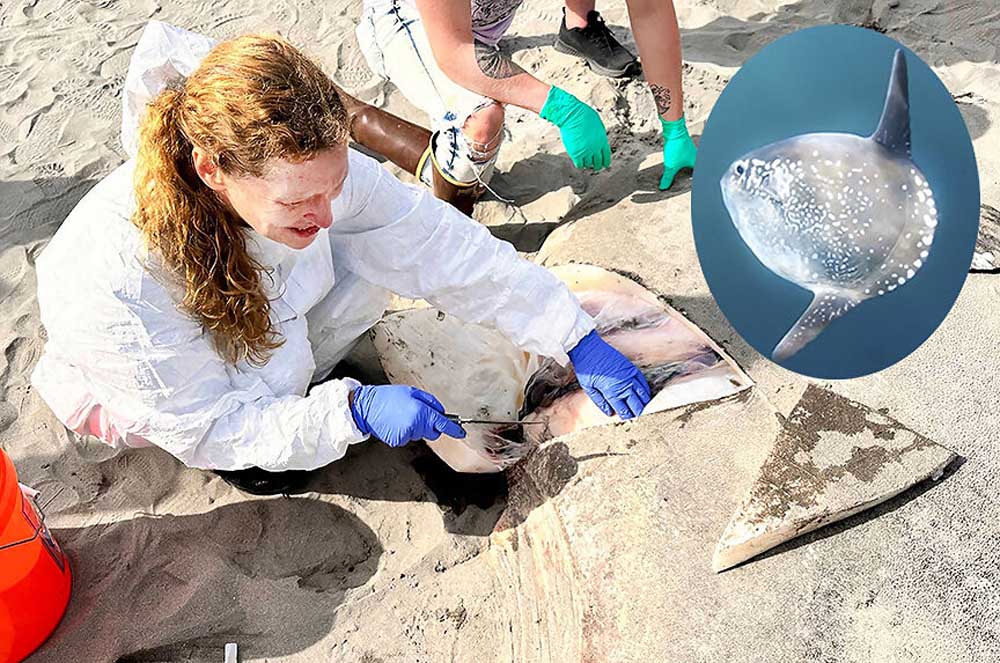In One Ear: Studying hoodwinker
Published 12:15 am Thursday, June 27, 2024

- Photos: Seaside Aquarium/Australian Museum
The Seaside Aquarium provided a June 21 Facebook update about the ongoing research on the 7.3-foot hoodwinker sunfish, aka mola tecta, ultrarare in this neck of the woods, that washed up on a Gearhart beach on June 3.
Trending
New Zealander and marine biologist Marianne Nyegaard (pictured) who was visiting a friend in Seattle, wanted samples of the fish, particularly the ovary, so she hustled down to Gearhart. As chance would have it, Nyegaard was the first to identify the mola tecta as a separate mola species in 2017.
According to the Australian Museum, other molas have different types of scales than the hoodwinker, which also doesn’t have a caudal fin, having a clavus (rudder) fin, instead. The designation tecta, derived from a Latin word meaning “disguised” or “hidden,” was given because of tectas’ rare appearances over the years, making them hard to spot.
“The crowd was spellbound by (Nyegaard’s) obvious passion and knowledge,” the post noted. “She answered every question with description, detail and eagerness as she prepared to take the ovary, (which) is an important organ in the study of this subspecies, because there is virtually nothing known about the mola from incubation to adulthood … (It was) the largest mola tecta to be sampled so far.”
Trending
Samples are also being sent to the Woods Hole Oceanographic Institution for a marine mercury chemistry study.









